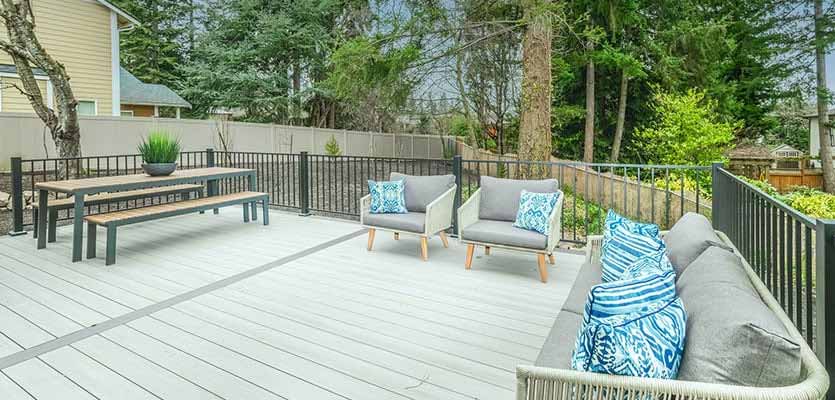The Deck Store has been helping home owners, business owners, and professional contractors better understand deck and patio construction for decades. We hope to expand the reach of that knowledge through our blog.
New Deck vs. Re-Deck
This is a guest post from LBM Journal:
I've been in this industry for 29 years, and if there is one thing I've noticed it's that there are a large number of decks in the U.S. that are more than 20 years old. A lot of homeowners are looking to update their outdoor living space this year—and that's why they come to you. Now, a great deal has happened in the last 20 years: codes have changed and building materials are evolving and enhancing every few years. For that very reason, when a customer comes into the store wanting to salvage and rebuild their existing deck, there are some key considerations.

First, acknowledge the reality that you're not selling a re-deck; you're selling the whole project. From my experience, the re-deck that customers think they want may not, in the end, make practical sense. It is, however, an opportunity for you to work with them to determine which makes more sense—building a new deck or rehabbing the old one.
Since so much has changed throughout the years, the prescribed code for attaching the ledger to the house or other various codes could differ from when the homeowner's deck was first built. In fact, if there is a great deal of labor that will be involved in the re-decking project, explain to the customer that the cost of taking the decking off, pulling out all the nails and screws, disassembling the railing to save joists, etc., may be greater than the cost of the product they are replacing.
Something else that the customer should consider is the design of the deck. In the past, decks were large and overpowering. Today, we're building smaller decks to include hardscape, softscape and other outdoor areas. Also, materials have evolved throughout the decades so we can utilize different colors with composites or railings. Not to mention, railings themselves have changed. Notched posts used to be the popular choice for most decks—a product not as common today—and now homeowners are selecting far more aluminum, iron, composite or PVC railings.
As I mentioned, materials used today have changed tremendously over the past decades. A customer may be looking to resurface an existing deck, but once again, it's not always a practical approach; joists hangers have changed and old treated lumber may be due for replacement. Plus, there would be nothing worse than having a customer pay thousands of dollars to re-deck a project, only to find out that the old joists don't meet current codes.
I've said in previous columns that it's always best to refer to the CCR (Code Compliance Research) reports, ESR (Evaluation Service Reports) or the manufacturer's publishing instructions to find out the maximum spans allowed, as well as the recommended fasteners. I always make sure to sell the correct fasteners with the decking that I'm offering to customers.
Finally, remember that this is an opportunity for customers to upgrade their home. I often use the analogy that selling a re-decking project is like a broken car: Sometimes it's more affordable to get a new car rather than fix an old car that certainly won't last as long and may be more expensive to operate. A customer might be quite fond of their old deck, but show them ways in which they can learn to really appreciate their new outdoor space.
Source | by Bob Heidenreich | Owner The Deck Store
Have a question about this topic?
The Deck Store has expert deck and patio builders on staff that are available to answer any question you might have.





